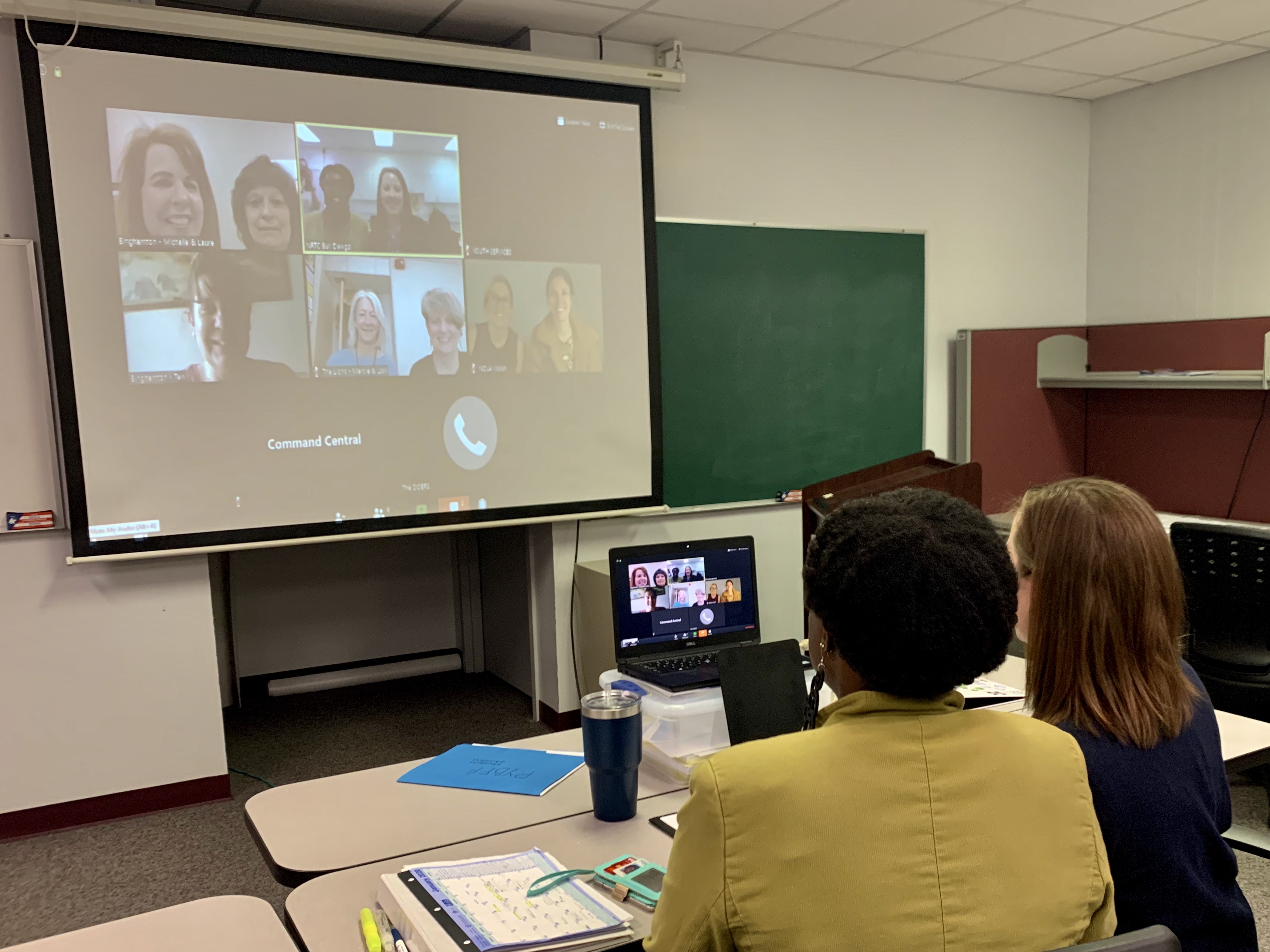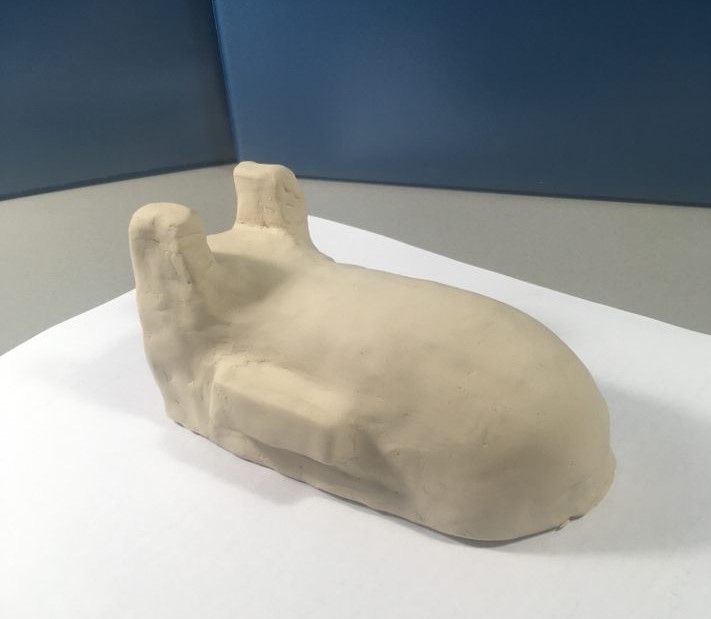
Inaugural Putting Your Best Foot Forward Trainer Workshop
The NRTC hosted its first free Putting Your Best Food Forward (PYBFF) Trainer Workshop.
The PYBFF Trainer Workshop provides professionals with information and strategies and processes they will need to use when implementing the PYBFF curriculum. After completing the Trainer Workshop, participants can access the PYBFF curriculum, which includes 40 hours of content on topics such as preparing for an interview, disability disclosure, resume development, online job searches, and improving self-presentation.
A unique aspect of this training for professionals is that it requires 2-3 trainers from the same location to register together. This requirement allows participants to practice some of the research-based techniques and activities from the curriculum before implementing the training. Jennifer Cmar, trainer workshop lead, hopes that this training “promotes the more widespread implementation of PYBFF, which would allow more youth to benefit from the curriculum and ultimately improve their knowledge, skills, and confidence in seeking employment.”
Anne Steverson, one of the NRTC trainers, is “excited to see the ripple effect this training will have given that four different states now have access to the PYBFF curriculum and materials.”
Cantrice Moffitt, NRTC Rehabilitation Training & Outreach Specialist, hopes that future trainer workshops will “evolve to become even more interactive as we incorporate other training platforms and resources.” For information about future trainer workshops or to get added to our waitlist, visit our course page.
Current Research Highlights: Job Retention and Advancement - A Mixed Methods Investigation
When it comes to employment for people who are blind or visually impaired (B/VI), most research focuses on helping these individuals find jobs. For this project, researchers at the NRTC wanted to investigate a different aspect of employment for people who are B/VI: the factors and vocational rehabilitation (VR) policies that help B/VI workers keep the jobs they already have and advance their careers.
To explore these topics, NRTC researchers are gathering data from multiple sources:
- A survey of B/VI individuals concerning their efforts to maintain or advance their careers
- A survey of VR agencies about their policies related to job retention and career advancement
- Data collected by VR agencies about the characteristics and employment outcomes of their employed applicants
- In-depth case study interviews with people who are B/VI about their experiences with VR and the impact of VR on their job retention or advancement
Information collected from each source is being analyzed to build a more complete picture of job retention and advancement for people who are B/VI. So far, this project has resulted in a number of interesting research findings:
- One study revealed that B/VI individuals who start VR services while they are already employed have different personal characteristics and service patterns compared to B/VI individuals who enter VR while unemployed. Employed VR consumers are more likely to be White, non-Hispanic, older, and more educated; the services they are more likely to receive include on-the-job supports, counseling and guidance, and technical assistance.
- Another study focused on risk factors that make it more likely that employed VR consumers who are B/VI will lose their jobs. Risk factors for job loss that emerged from this research include being female, having a secondary disability, working fewer hours, and having less education. B/VI individuals who remained in the VR system for longer periods of time were also more likely to lose their jobs, especially if they were older.
- A third study examined results from the national survey of state VR agencies regarding their policies and procedures around job retention and career advancement. The survey revealed that VR agencies were more likely to make policy changes to support career advancement than job retention. Few states appear to have well-developed policies for helping employed VR consumers who are B/VI maintain their existing jobs. Where such policies do exist, they often lack guidelines on how to serve employed consumers in a timely fashion.
- A recently published study from this project examined the factors that impact whether or not employed VR consumers who are B/VI receive services in a timely manner, which previous research found to be an important indicator of whether such consumers would maintain employment. Employed VR applicants who are B/VI received services more quickly from separate blind agencies, in comparison to combined agencies. Being younger, non-White, or receiving disability benefits made B/VI individuals more likely to wait longer for services.
Over the coming months, NRTC researchers will continue to analyze data from the survey of individuals who are B/VI and will conduct the in-depth case study interviews with a smaller sample of B/VI workers. Stay tuned for future findings from this project, which will be listed on the project webpage.
Training and Technical Assistance
New Products
We created a new practice guide: Recommendations for VR Professionals Regarding a First Meeting with an Employer. This practice guide summarizes the findings of a research study and provides recommendations for VR professionals based on these findings. The guide is available on our website under Resources for Professionals.
New Online Courses
We have four new courses available:
- Improving Business Development Skills: A Training for Rehabilitation Professionals helps rehabilitation professionals improve their knowledge and skills related to engaging with employers (up to 17.25 CRC)
- Basics in Evaluation of Programs for Older Individuals who are Blind breaks program evaluation into manageable steps so that OIB program managers can be confident in their abilities to accomplish a program evaluation that yields meaningful data. (1-hour CRC, ACVREP, NPBCB)
- Strategies for Teaching Older Adults with Vision Loss helps professionals learn how to provide instruction in ways that keep older program participants motivated and engaged in their learning process. (1-hour CRC, ACVREP, NPBCB)
- Vocational Rehabilitation Service Models for Consumers who are Deaf-Blind involves reading a journal article about a study that investigated service models used by vocational rehabilitation agencies when providing services to a consumer with deaf-blindness and the effectiveness of those models (1-hour CRC, ACVREP, NPBCB)
Along with these four new courses, we have updated content in the following:
- Overview of Assistive Technology for Individuals who are Blind or Visually Impaired (1-hour CRC, ACVREP, NPBCB)
- Randolph-Sheppard Staff Training
- Understanding and Overcoming Transportation Barriers (1-hour CRC, ACVREP, NPBCB)
All our courses are available on our new learning management system. For more information about our courses, visit our Frequently Asked Questions course page.
Other NRTC News
Welcome to the Team
We are pleased to have Catherine Hultman and Simon Marcy join our staff at the NRTC.
Catherine joined the NRTC in January as the OIB-TAC Project Manager. In this role for OIB-TAC, she handles all logistics for the project and edits materials. She also manages the Chapter-2 listserv, which distributes information on OIB-TAC program and activities. Catherine earned her master’s in higher education and a bachelor’s in secondary English education at the University of Mississippi.
As the NRTC’s Web Designer, Simon maintains the content and accessibility of all three of our websites. Currently, Simon is overseeing the redesign of two of our sites, blind.msstate.edu and ntac.blind.msstate.edu. He also edits and posts new courses to Canvas. Simon earned his bachelor’s and master’s in history from Mississippi State University.
Outreach with Engineering Team
Kendra Farrow, research and training associate, worked with two student groups from the Mississippi State University Bagley College of Engineering on their concept project of Braille Ring. As a concept project, the Braille Ring’s mechanics, electrical system, and design are thoughtfully planned but not manufactured. In their refreshable braille display design, braille would move under a user’s finger for speedy reading, portability, and affordability. When their design is completed, the students will present their concept to the Mississippi State University Center for Entrepreneurship & Outreach to request funds to move forward with the project.


Publications
Cmar, J. L., & McDonnall, M. C. (2020). Short-term effectiveness of job search skills training: Comparisons by summer work experience participation. Rehabilitation Counseling Bulletin. Advance online publication.
Crudden, A., Sui, Z., & Lund, E. (2020). Employed vocational rehabilitation applicants with visual disabilities: Factors associated with timely service delivery. Journal of Visual Impairment & Blindness, 114(1), 31–42.
Lund, E. M., & Cmar, J. L. (2020). A systematic review of factors related to employment in transition-age youth with visual impairments. Rehabilitation Psychology. Advance online publication.
McDonnall, M. C., & Antonelli, K. (2020). The impact of a brief meeting on employer attitudes, knowledge, and intent to hire. Rehabilitation Counseling Bulletin, 63(3), 131–142.
McDonnall, M. C., & Lund, E. M. (2019). Employers’ intent to hire people who are blind or visually impaired: A test of the theory of planned behavior. Rehabilitation Counseling Bulletin. Advance online publication.
McDonnall, M. C., Cmar, J. L., & Lund, E. M. (2020). Comorbid traumatic brain injury and visual impairment: Vocational rehabilitation service provision and agency-level outcomes. Journal of Visual Impairment & Blindness, 114(1), 6–17.
Steverson, A. (2020). Relationship of employment barriers to age of onset of vision loss. Journal of Visual Impairment & Blindness, 114(1), 63-69.
Upcoming Presentations & Workshops
Farrow, K. (2020, June 8-10). Eye-Friendly: Tips and Tricks for Interacting with Older People with Vision Loss [Conference session]. National Council on Aging Conference, Albuquerque, NM, United States.